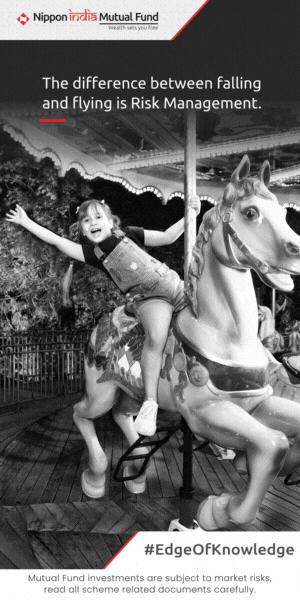How to select ETFs using Nippon India MF VICTER framework

Exchange Traded Funds (ETFs) have been rising in popularity in India over the last several years. In the last 3 years, assets under management (AUM) in ETFs (including Gold ETFs) have multiplied by nearly 4 times growing at a compounded annual growth rate (CAGR) of around 53% (as on 31st January 2022), as per AMFI. Today ETFs have overtaken liquid funds as the largest mutual fund category in terms of AUM. In this blog post, we will discuss how to select ETFs using Nippon India MF’s VICTER framework. Before we discuss this approach, let us quickly recap what ETFs are and their benefits.
Exchange Traded Funds
Exchange traded funds (ETFs) are passive schemes, which aim to track a particular market index like Sensex, Nifty 50, BSE – 100, Nifty – 100 etc. ETFs invest in a basket of stocks which replicate the index the ETF aims to track. The weight of an individual security in an ETF portfolio mirrors the weight of the security in the index. ETFs do not aim to beat their respective benchmark indexes; their aim is to track the index. You need to have Demat and trading accounts to invest in ETFs.
You mat like to read what is Sensex ETF?
How to invest in ETFs?
After an ETF NFO closes, you can buy or sell units of ETFs on stock exchanges only, unless you are transacting in lot sizes as specified by the Asset Management Companies (AMCs) in their Scheme Information Documents (SIDs).
Benefits of ETFs
- Low cost
- No unsystematic risks
- No human behavioural biases
Concerns of investors
- How easy it is to buy / sell ETFs in stock exchanges?
- Can I buy / sell at the right price?
- How closely is the ETF tracking the index? Are their significant deviations?
- Will the ETF underperform the index?
How are ETF units bought or sold in the exchange?
Before we address these concerns, let us discuss ETFs are bought or sold in stock exchanges. When you are the selling or buying ETF units in the stock exchange, the price at which you sell or buy will depend on the bid-ask price of the ETF. For investors, who do not have experience of trading in stock markets, bid is the highest price at which the buyer is ready to buy a certain number of shares or units of ETFs from you. Similarly, ask is the lowest price at which the seller is ready to sell a certain number of shares or units from you. Though the AMC discloses the real-time Net Asset Values (NAVs) of ETFs, you should understand that you will not be buying or selling ETF units at NAVs in the market. The buy or sell price of an ETF can be different from the NAVs, depending on the liquidity of the ETF.
Nippon India MF VICTER for selecting ETFs
VICTER framework has 4 parameters you need to consider when you are investing in ETFs. The 4 parameters are:-
- Average Daily Trading Volumes: Volume is the V of the VICTER framework. Stocks trading with high volumes are easier to buy or sell compared to stocks trading with thin volumes. Average daily trading volumes indicate how many shares or ETF units are traded on average on a daily basis. High average daily trading volumes indicate investor interest and liquidity of an ETF. If your ETF has high average daily trading volumes, then it will be easier for you to sell the ETF. You will be able to find out average trading volumes of an ETF in the website of the stock exchange.
- Impact Cost: Impact cost is the IC of the VICTER framework. The liquidity of ETFs is related to their impact cost. It is the cost attributable to lack of market liquidity. Lack of liquidity translates into a high cost for buyers and sellers. ETFs that have higher liquidity will have a lower impact cost.Let us simplify it with an example.
Assume that you want to buy 5,000 units of an ETF. A best-buy order for 1,000 ETF units at Rs.980 and best-sell order for 2,000 ETF units at Rs.982 are displayed on the National Stock Exchange (NSE) terminal. As a result, the average price — Rs.981 — should be the ideal pricing. However, if you had to purchase 5,000 shares of that ETF for Rs.991 on average, your impact cost is 1%, i.e. (991-981)/981. This means that due to the ETF’s liquidity, you paid 1% indirectly as a transaction cost to buy 5,000 units.
The difference between the best buy and the best sell orders (in this case, Rs.2) is the bid-ask spread. Hence, if a person buys 1,000 shares and sells them immediately, he is poorer by the bid-ask spread. This spread may be regarded as the transaction cost which the market charges for the privilege of trading. The impact cost for ETFs that are liquid is low. So, impact cost is the second aspect you need to consider while selecting an ETF. One must choose an ETF with lower impact cost. - Tracking error: Tracking error is the TE of the VICTER framework. Tracking error is the deviation of the ETF returns from the index returns. Standard of monthly deviation of ETF and index returns is defined as tracking error. There are various sources of tracking error e.g. fees and expenses of the scheme, cash balance held by the scheme due to dividends received, halt in trading on the stock exchange due to circuit filter rules, etc. You can find tracking errors of ETFs in the monthly fund factsheets. You should always invest in ETFs having low tracking errors.
- Total Expense Ratio (TER): Expense Ratiois ER ofthe VICTER framework. Total expense ratio (TER) of a fund is the cost of managing and operating the scheme on a per unit basis. It is calculated by dividing the total expenses of the fund with the assets under management (AUM). The expenses of the fund include fund management, registrar and transfer agent fees, custodian fees, transaction costs etc. Expenses on a per unit basis are deducted from the schemes assets (per unit) to arrive at the Net Asset Value (NAV) of the scheme. TER is one the main source of tracking errors.
VICTER factors are related
In the table below, we are showing daily average volumes, impact cost, tracking errors and TERs of 5 Nifty 50 ETFs.

Source: Nippon India MF, as on 31st January 2022
Please see below the same statistics for 5 Bank Nifty ETFs.

Source: Nippon India MF, as on 31st January 2022
You can see that higher traded volume leads to higher liquidity and lower impact costs. You should consider ETFs with higher liquidity.
Conclusion
It is best to invest in ETFs that have a lower expense ratio however this parameter must be taken together with the other three. In this blog post, we have discussed how you can select ETFs using Nippon India MF’s “VICTER” framework. Consult with your stockbroker or financial advisor if you need help in selecting ETFs based on this framework.
Issued as an investor education initiative by Nippon India Mutual Fund.
Mutual Fund Investments are subject to market risk, read all scheme related documents carefully.
RECOMMENDED READS
LATEST ARTICLES
- Importance of having exposure to commodities in the portfolio
- How to select the right index funds for your portfolio
- Why you need to have large cap mutual funds in your portfolio
- Why invest in Flexicap mutual funds
- Why should one consider Gold as a part of portfolio considering their prices in the current situation
The information being provided under this section 'Investor Education' is for the sole purpose of creating awareness about Mutual Funds and for their understanding, in general. The views being expressed only constitute opinions and therefore cannot be considered as guidelines, recommendations or as a professional guide for the readers. Before making any investments, the readers are advised to seek independent professional advice, verify the contents in order to arrive at an informed investment decision.
Mutual Fund investments are subject to market risks, read all scheme related documents carefully.
Quick Links
Follow Nippon India MF
More About Nippon India MF
POST A QUERY





